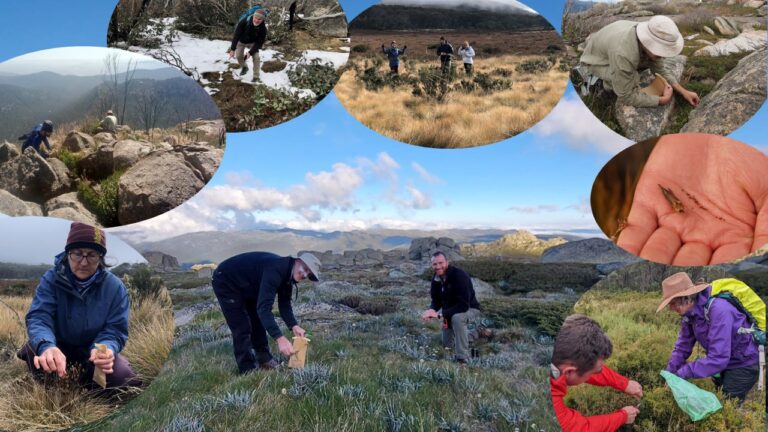Molecules in the Sand: eDNA and the Biology of Tjakura, the Great Desert Skink (Liopholis kintorei)
Research on the vulnerable Tjakura, the great desert skink, has received a significant boost with the award of a three year CSIRO postdoctoral fellowship.
The successful application was developed by the Parks Australia science team and Uluru-Kata Tjuta National Park, along with colleagues at CSIRO and ANU.
The fellowship will focus on cutting edge eDNA science which can be integrated with traditional knowledge to improve our understanding and management of the Tjakura.
The Tjakura is endemic to the western deserts of the Australian arid zone and is well known and important to Aboriginal people throughout this region for lore and as a food source.
It is a large, burrowing skink that can grow to 44 cm long and weigh up to 350 g. The species has reddish-tan smooth scales, with creamy-lemony flanks and a yellow belly. One of its other Aboriginal names – Mulyamiji – means ‘red nose’.
The Tjakura constructs and maintains an interconnected network of tunnels within which it aggregates for protection from predators and the extreme thermal environment. Tunnels can be occupied continuously for up to seven years with multiple generations participating in the construction and maintenance of burrows. Their main food source is termites.
The species appears to be declining throughout its range with many previously known sites no longer supporting populations. The major threat to this species appears to be predation, particularly by feral cats, after loss of vegetation cover from fire.
The postdoctoral fellowship will study the Tjakura using environmental DNA. The research will be challenging and innovative requiring new methods for extracting eDNA from the sand in and around the Tjakura burrows. The hope is eDNA will provide much more detailed information about the species than can be obtained through traditional field observations.
This project provides a fantastic opportunity to bring together cutting-edge science with traditional knowledge as the eDNA information collected will be integrated with data from the burrow surveys the park conducts with the Anangu and traditional owners. Bringing to together western and indigenous knowledge will help the community and the park better understand and manage this important species.
If the project is successful, it will not only inform management of the Tjakura but have potential wider application to fauna and flora surveys in other desert environments in Australia and overseas.
The postdoctoral fellow will be recruited and start the project by the end of the 2021. One of the first steps in the project will be detailed discussions with the Anangu community, building on initial consultation that took place in April 2021.
The Parks Trust is working with Uluru-Kata Tjuta National Park to support Anangu involvement in the project through employment of an Anangu team leader, or “malpa” (meaning “companion or friend” in Pitjantjatjara). This person would be responsible for ensuring Mutitjulu Community Ranger program participants are supported and engaged in this work. The Mutitjulu Community Rangers are indigenous community members who work on Uluru-Kata Tjuta National Park undertaking a range of activities including seasonal land and fire management activities, patch burning, fauna surveys and park facilities maintenance.
You can help us support Anangu engagement in this project by making a donation here.



